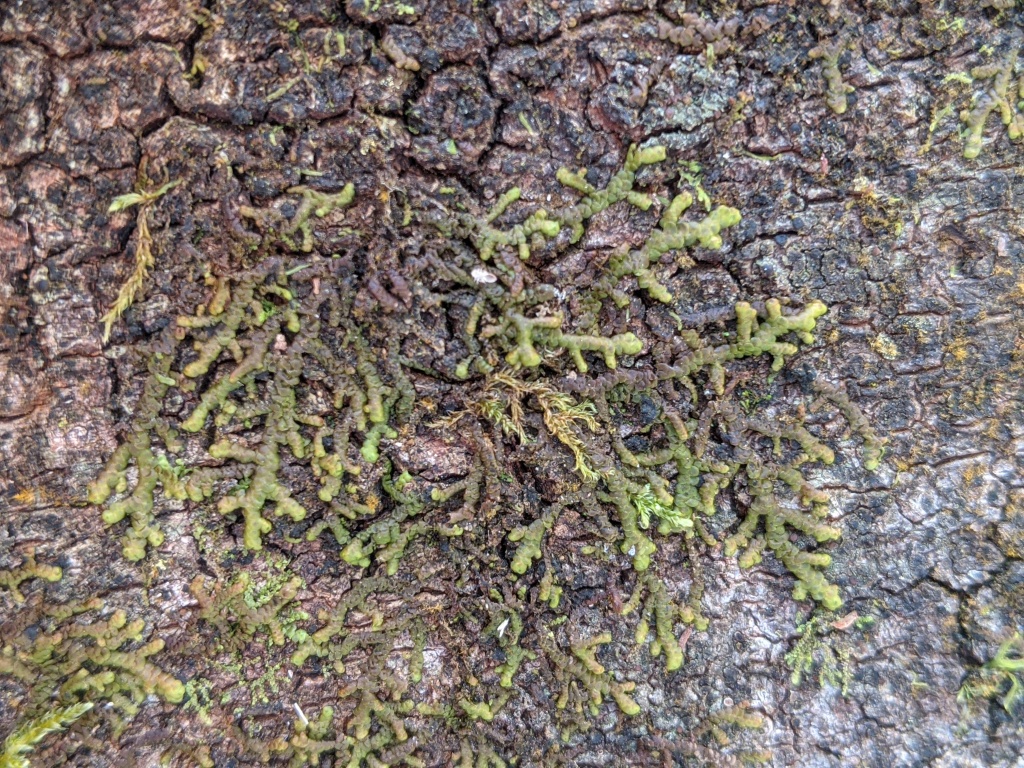Frullania falciloba
Lehm.Epiphytic or lithophytic, brown to olive-green becoming lime grown toward stem apices. Stems bipinnately branched. Mid stem and branch lateral leaves broadly ovate, elliptic or obovate, 0.9–1.33 mm long, 0.65–1.1 mm wide, rounded at apex, not angled away from substrate when moist, imbricate; cells irregular, 12–23 µm long and 10–20 µm wide at margin, 20–40 µm long and 15–20 µm wide around centre, 35–45 µm long and 17–35 µm wide toward base, with prominent trigones throughout and frequent intermediate thickenings becoming more occasional toward base. Lobule with inflated falcate elephant-trunk-like portion diverging from stem, 0.23–0.53 mm long, 0.18–0.33 mm wide, with truncate apex; cells irregular, 13–25 µm long, 9–18 µm wide, with prominent trigones and intermediate thickenings throughout. Stylus narrowly triangular, c. 7–8 cells long and 4–5 cells wide at base, terminal cell elongated. Underleaves broadly obovate to oblate in outline, bifid to 1/9 of length, otherwise entire, 0.4–0.8 mm long, 0.5–0.8 mm wide, with lobes parallel to slightly divergent, contiguous to distant; sinus obtuse or subacute; cells irregular, 13–33 µm long, 10–20 µm wide, longest at basal centre, smallest at margin, with prominent trigones and intermediate thickenings throughout. Perianth cylindric-clavate to narrow ovoid, 2.0–2.5 mm long, 0.9–1 mm wide, 3-keeled, dorsally slightly inflated, obtuse to truncate at apex, with a short beak, sessile, smooth; keels entire.
Wim, VVP, GipP, OtP, WaP, Gold, CVU, GGr, DunT, EGL, EGU, WPro, HSF, HNF, OtR, Strz, MonT, HFE, VAlp. Occurring along and south of the Great Dividing Range in wet forests. Also south-west WA, QLD, NSW, ACT, Tas and New Zealand.
The most common Frullania species in wetter forests. Distinguished by the combination of the very short underleaf lobes, the lobules with a falcate inflated section resembling an elephant’s trunk and the very prominent intermediate thickenings throughout the leaf lobe.
 Spinning
Spinning